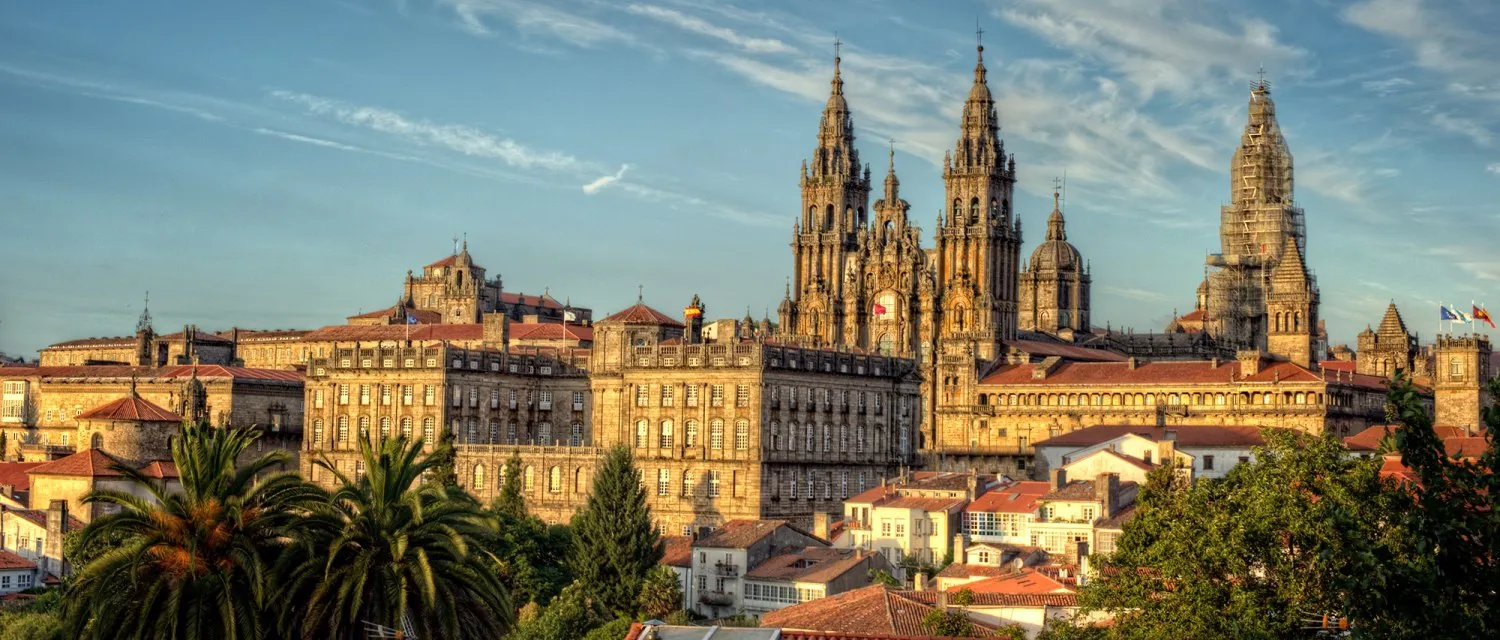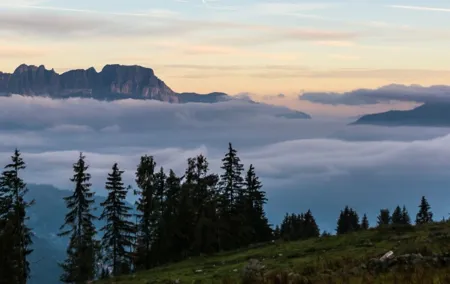The Camino de Santiago, also known as the Way of Saint James, is a collective term for several pilgrimage routes across Europe that hold significant religious importance for Catholics. Every year, thousands of faithful pilgrims and simply those looking to challenge themselves, find spiritual balance, and seek their direction in life undertake this journey.
Where are we heading to?
The final destination of our journey is the quaint Spanish town of Santiago de Compostela. It is here that the remains of Saint James, one of the 12 apostles and disciples of Jesus Christ, are buried. According to legend, James was the elder brother of John the Evangelist. He suffered martyrdom at the hands of King Agrippa, after which his disciples transported his body from Jerusalem to its final resting place.
Pilgrimage to Santiago de Compostela began when locals started noticing an unusual glow emanating from the earth at the spot where the apostle's remains lie.
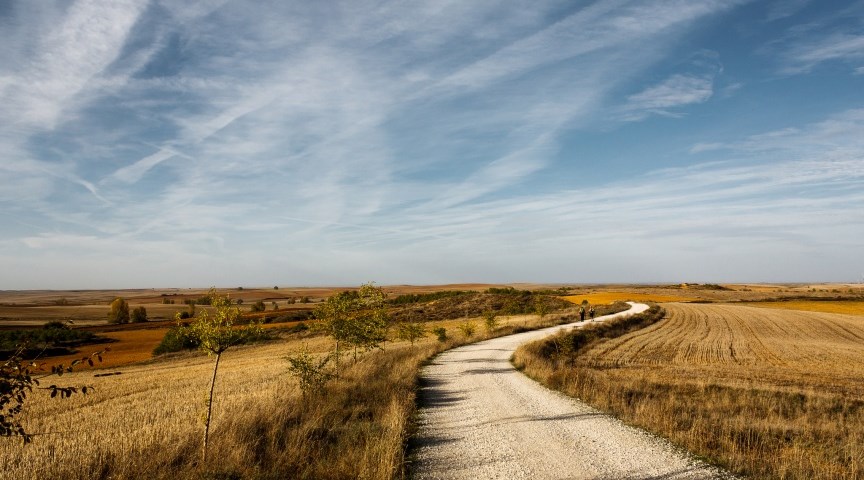
flickr / Ramon Bacas
Famous Pilgrims
Among those who have ventured on the Way of Saint James were rulers and many notable figures. King Edward I, St. Francis of Assisi, and the artist Jan van Eyck have all traveled this route at one time. Pope John Paul II also did not remain aloof. The world-renowned Paulo Coelho undertook a pilgrimage along the Way of St. James, which inspired him to write the novel "The Pilgrimage". The book significantly increased people's interest in the walking pilgrimage route, particularly to the city of Santiago de Compostela.
Where to Start the Journey?
There are about 15 different routes that start in France, Germany, Portugal, and Spain. Each has its own length and unique features. The longest route starts from Seville (Spain) and stretches about 1000 kilometers. The shortest path begins in the city of Sarria (Spain) - pilgrims cover its 112 kilometers in five to six days.
The route from Madrid can be considered a golden mean, spanning 676 kilometers. This distance can be covered in thirty-four days. If you decide to start here, it's advisable to look for tickets to Madrid in advance, as the Spanish capital is a popular destination. Also, ensure to book hotels in Madrid ahead of time.
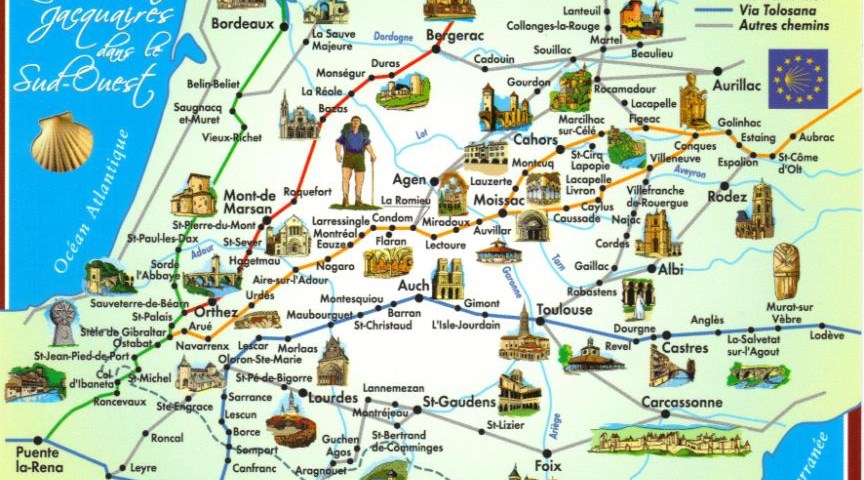
flickr / Erin
Preparation
Walking such a distance is a serious challenge even for physically fit individuals, let alone those unaccustomed to intense physical activity. Embarking on such a tour, you should be fully aware and understand the difficulties you might face along the way.
The most crucial aspect is packing the right backpack. It's better to start packing in advance, carefully considering every potential situation, weather conditions, etc. Every unnecessary item will weigh you down, while you might find yourself missing something important.
First and foremost, pack a first aid kit. It should include emergency aids for cuts/abrasions, medicines for fever, poisoning, headaches, sunscreen, antiseptic, daily medications, or specific drugs.
Essential items include quality waterproof hiking boots, thermal underwear, enough socks and change of clothes, a headgear, sunglasses, a raincoat, t-shirts with both short and long sleeves.
Also, don't forget to pack personal hygiene products and additional hiking items (sleeping mat, sleeping bag, towel, flashlight, folding knife).
The Journey
No matter the route, most of the Way of St. James traverses through the northern regions of Spain. Pilgrims often refer to it as the "star road" since the Milky Way points them in the right direction. Most pilgrims cover hundreds of kilometers on foot, but some use transportation, like bicycles or even travel on a donkey. The Way of St. James is a scenic route offering spiritual and cultural enrichment, a peek into the life of Spanish provinces, and plenty of new knowledge.
Pilgrims can stay in special hostels called albergue. These offer basic amenities for a minimal fee, ranging from five to fifteen euros per person. There are also free albergues available. Along the route, you can find regular hotels, but naturally, their rates are higher.
Regarding meals, there are cafes along the path offering pilgrim menus at affordable prices. These are called menu del peregrino.
At the beginning of your journey, you can obtain a pilgrim's passport from one of the special offices, which will be stamped in hostels and churches along the route. Upon completing the journey in Santiago de Compostela, near the Cathedral of Saint James, you can receive a personal certificate called Compostela. It's issued in Latin and certifies that you have completed the Way of Saint James.

flickr / Homer's Travels
As a keepsake of the pilgrimage, many bring home the main symbol of the Way - the scallop shell. According to legend, Christ's disciples' boat, which transported Saint James's body to the Iberian Peninsula, was covered with such shells.
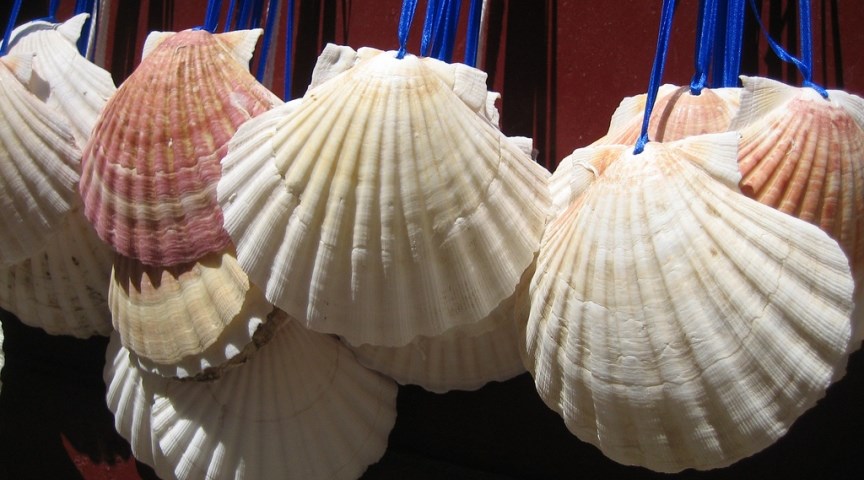
flickr / Pauline Symaniak
